GIÁ TRỊ CỦA CẮT LỚP VI TÍNH ĐỊNH LƯỢNG TRONG CHẨN ĐOÁN KHÍ PHẾ THŨNG Ở NGƯỜI BỆNH PHỔI TẮC NGHẼN MẠN TÍNH
Nội dung chính của bài viết
Tóm tắt
Trên hình ảnh cắt lớp vi tính (CLVT) phổi phân giải cao có vai trò định lượng vùng phổi ứ khí do hẹp đường dẫn khí và tổn thương bề mặt phế nang, vùng phổi ứ khí là vùng phổi có tỷ trọng thấp < -950HU, có thể tính tỷ lệ % vùng phổi có tỷ trọng thấp (LAA%). Nghiên cứu mô tả cắt ngang, 59 người bệnh bệnh phổi tắc nghẽn mạn tính được chẩn đoán và điều trị tại bệnh viện Đại học Y Hà Nội, từ tháng 07/2024 đến tháng 01/2025. Các bệnh nhân được đo chức năng hô hấp FEV1, chụp cắt lớp vi tính phổi phân giải cao. Sử dụng phần mềm Ziostation của Ziosoft tính LAA% tự động. Phân độ bệnh phổi tắc nghẽn mạn tính theo tỷ lệ LAA% (phân độ GODDARD) và theo giá trị FEV1 (phân độ GOLD). Kết quả nghiên cứu cho thấy có sự tương quan mức trung bình giữa phân độ bệnh GODDARD (phân độ theo LAA%) với phân độ bệnh GOLD (phân độ theo chức năng hô hấp FEV1) với với r=0.35, có ý nghĩa thống kê với p= 0.007. Như vậy LAA% là một thông số phản ánh tình trang ứ khí phổi trên hình ảnh CLVT, đồng thời cũng là thông số ước tính được chức năng hô hấp.
Chi tiết bài viết
Từ khóa
Khí phế thũng, Bệnh phổi mạn tính tắc nghẽn, Cắt lớp vi tính định lượng
Tài liệu tham khảo
2. Choromańska A, Macura KJ. Role of computed tomography in quantitative assessment of emphysema. Polish Journal of Radiology. 2012;77(1):28.
3. Patel AR, Patel AR, Singh S, Singh S, Khawaja I. Global initiative for chronic obstructive lung disease: the changes made. Cureus. 2019;1:5.
4. Raherison C, Girodet PO. Epidemiology of COPD. European Respiratory Review. 2009; 18 (114):213-221.
5. Fujimoto K, Kitaguchi Y, Kubo K, Honda T. Clinical analysis of chronic obstructive pulmonary disease phenotypes classified using high‐resolution computed tomography. Respirology. 2006;11(6):731-740.
6. Tamondong-Lachica DR, Skolnik N, Hurst JR, et al. GOLD 2023 update: implications for clinical practice. International Journal of Chronic Obstructive Pulmonary Disease. 2023:745-754.
7. Cảnh PH. Nghiên cứu đặc điểm hình ảnh và thể tích khí phế thũng ở bệnh nhân bệnh phổi tắc nghẽn mạn tính bằng cắt lớp vi tính đa dãy. Trường Đại học Y Hà Nội; 2017.
8. Smith BM, Austin JH, Newell Jr JD, et al. Pulmonary emphysema subtypes on computed tomography: the MESA COPD study. The American journal of medicine. 2014;127(1):94. e7-94. e23.
9. Song, Lan, et al. "Quantitative CT analysis in patients with pulmonary emphysema: do calculated differences between full inspiration and expiration correlate with lung function?." International Journal of Chronic Obstructive Pulmonary Disease (2020): 1877-1886.


